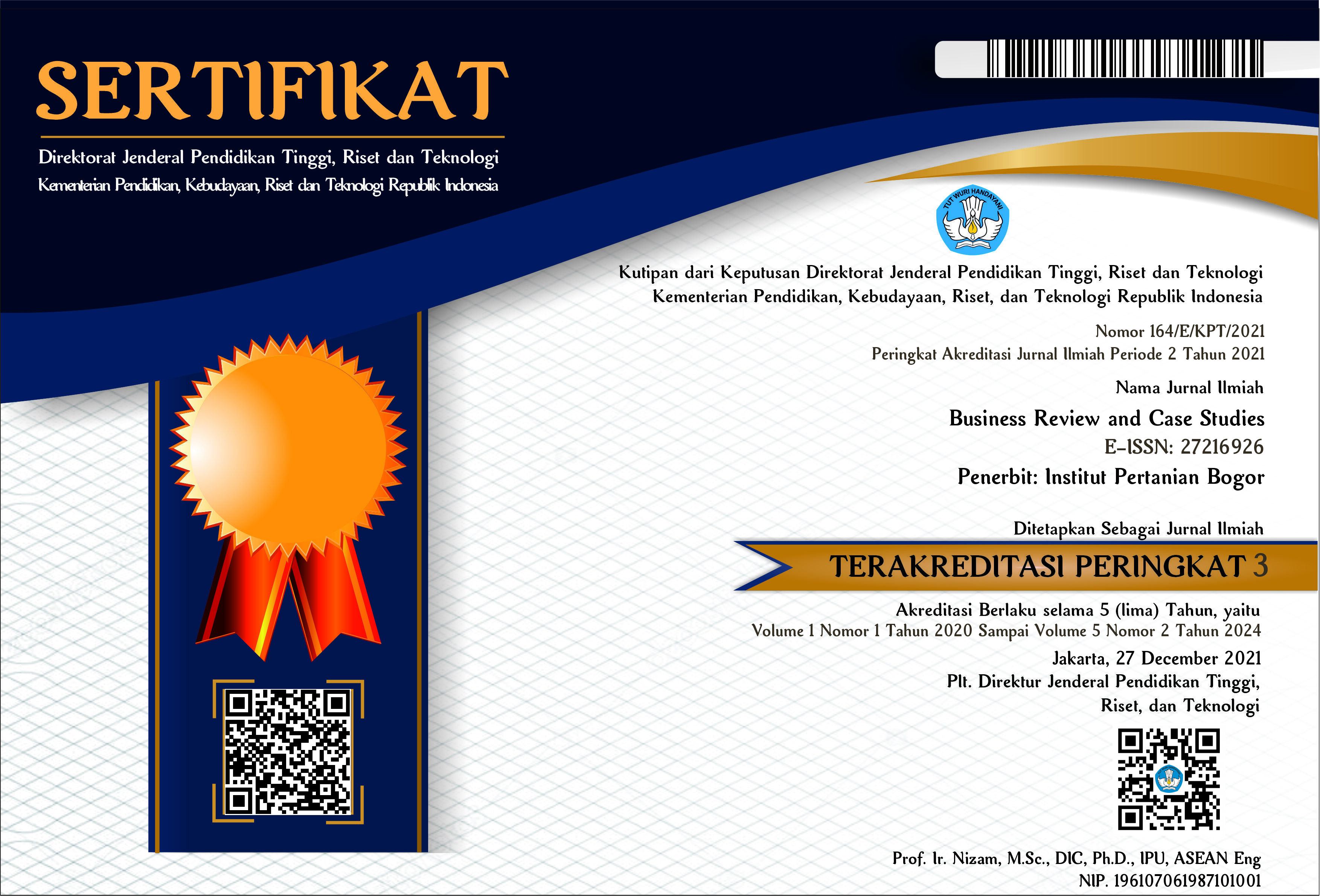Structure and Wage Scale Based on The Two-Point Method at Small Enterprises Culinary Sector in Cibinong District
Abstract
The Covid-19 pandemic that occurred in Indonesia from early 2020 to 2023 resulted in an unstable economy. However, the Indonesian economy was supported by Micro, Small, and Medium Enterprises (UMKM). The industry contributing the highest to the Gross Domestic Product (GDP) among UMKMs was the Food and Beverage Industry. Based on this, there was a need for the enhancement of UMKM quality, not only in terms of sales but also in managerial systems, including compensation. Government Regulation No. 1 of 2017 mandated that every business must have a Pay Structure and Scale. This research aimed to analyze the Pay Structure and Scale of Culinary Micro and Small Businesses using the dual point method. The research was conducted from January to August 2023 in the Cibinong District, Bogor Regency. The existing Pay Structure and Scale were not ideal; improvement was necessary. The research results showed that each Small Business was already paying its employees in accordance with the Recommended Pay Structure and Scale, thereby eliminating the need for additional wage operational costs. Apart from the Pay Structure and Scale, Micro and Small Businesses could also enhance their quality and competitiveness through internal fairness by implementing the 3P concept (Pay for Person, Pay for Position, Pay for Performance) and external fairness through the attract, retain, engage approach.
Keywords: umkm culinary, financial compensation, small enterprises, structure and wage scale, two-point method







.jpg)






